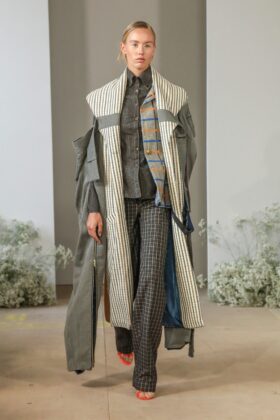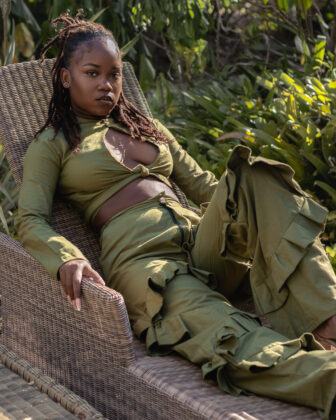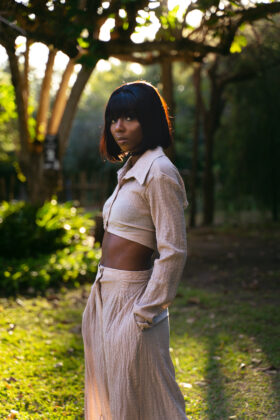To those who watched Myrkida Harris grow up, her path seemed inevitable. From childhood adventures in her mother’s closet to flipping meticulously through every fashion magazine she could get her hands on, the signs were all there: fashion was her destiny.
When she enrolled at the Vieux Fort Comprehensive Secondary School, the dream, however, remained dormant. In a country where the fashion industry was still in its infancy, building a career in design felt uncertain—impractical even. Harris was encouraged to follow a more conventional path, pursuing business like her father.
But over time, the quiet ache of an untapped calling became unbearable, and a life agonising over an unrequited fashion dream was no longer an option. With the support of her parents, she took the leap and moved to London to study fashion at Middlesex University.
“It’s actually broadened my view, my perspective on fashion,” she told St Lucia Times. Her overseas education would span nearly four and a half years—years filled with both discovery and challenge.
“My first year was rough,” she said.
“Because I didn’t know how to sew properly.
I didn’t know how to draw properly.” While her background in business provided a solid foundation, it didn’t equip her with the technical skills required for garment construction or fashion illustration.
She pushed through. Inspired by the diversity in her classroom, she cultivated friendships with peers from Italy to Iran, each one contributing to her growing cultural and creative appetite.
Her vision began to sharpen. She was featured in a fashion magazine and selected as one of 15 students out of 90 to produce on a higher scale. She also launched her own brand: Ventura (also known widely as Ventura by Myrkida).
The label showcases tailored silhouettes that highlight the versatility of firm, structured fabrics—her signature aesthetic.
Less frills and ruffles. Her work balances feminine elegance with masculine edge, a refined androgyny woven into every piece.
Her garments are known to be timeless, embodying a similar classic feel to one of her favourite designers, Tom Browne.
Harris has since presented her designs at Export the Runway and at a special Saint Lucia Jazz Festival fashion show. She also creates custom pieces for clients who appreciate bold, original expression.
While Saint Lucia’s fashion scene is still emerging, Harris believes there is potential.
“Business, sometimes it’s slow, sometimes it picks up. It depends,” she says. One of the biggest hurdles, she notes, is access: finding the right fabrics to match her vision can be difficult. Designing clothes in Saint Lucia often comes with hidden costs like import duties, equipment and the labour-intensive nature of craftsmanship—all of which make it harder to maintain affordability for the average client.
Still, she presses on. Harris envisions her own runway show in the near future and hopes to attract support to bring that dream to life. She can picture her pieces worn by fashion-forward celebrities like Keke Palmer and Rihanna, muses whose fearless style aligns with her own.
Harris is hopeful that, with time, more avenues will open up for fashion in Saint Lucia and that the local mindset will evolve to embrace the industry as a serious and viable pursuit. She envisions a future where designers are given space to grow, where creativity is matched by opportunity, and where Saint Lucians not only consume fashion but help define it.








